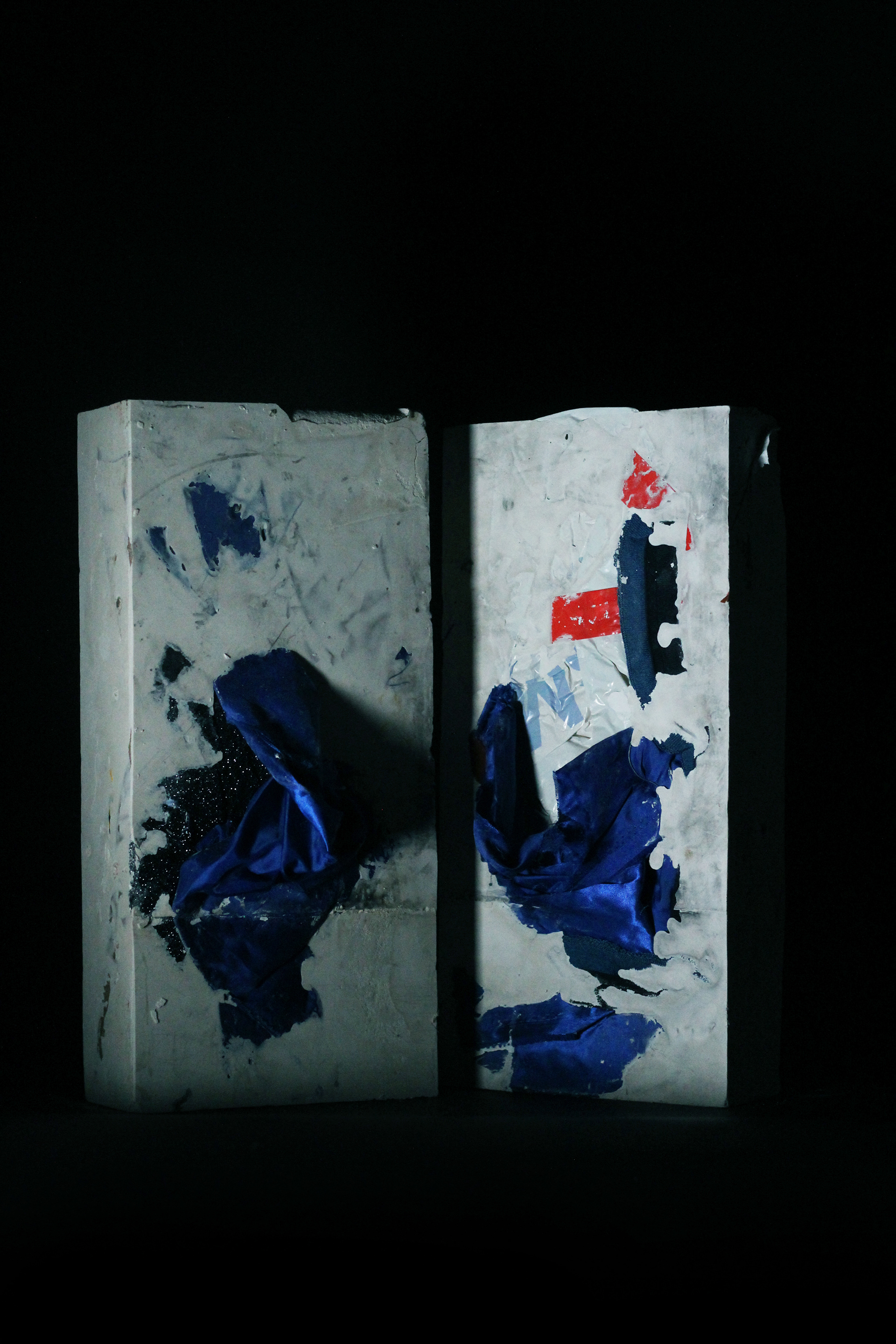

With this piece, I wanted to explore how I could refine the ideas into a more cogent sculpture. During research, I came across the work of Jedediah Caesar. Caesar sets objects in resin, sanding down the edges into perfect cuboids. I felt that, in constructing my last sculpture from the exterior outwards, I had lost the original geometric perfection and poetry of the cubic shape. As a result, the perfection associated with Caesar’s work was attractive and a good example to work off. I found the balance between order and chaos especially enticing.
I knew that I had to also photograph the resulting sculpture, and that this would be an essential part of the final result as it had been for the majority of my project. I wanted the photos to have a sublime quality, and hence to be on a black background. Taking all this into account, the decision to use white plaster for my own project was partly a pragmatic one.
To begin with, I gathered various materials which would later become part of the sculpture. The main item which I used, and which is the most visible material in both, is a dark blue satin cloth. This connects with earlier themes in project, where I looked at the connotations of blue throughout art history.
Next, I poured the plaster into the mould I created and filled with materials. From this point on, the process was out of my control and a strong element of chance instead took control. To me, this sense of uncertainty is an important part of the process, as it reflects the uncertainty that leads people to have to build themselves makeshift shelters. In this way, and through the found nature of the materials, my sculptures represent the contrast between slums and skyscrapers